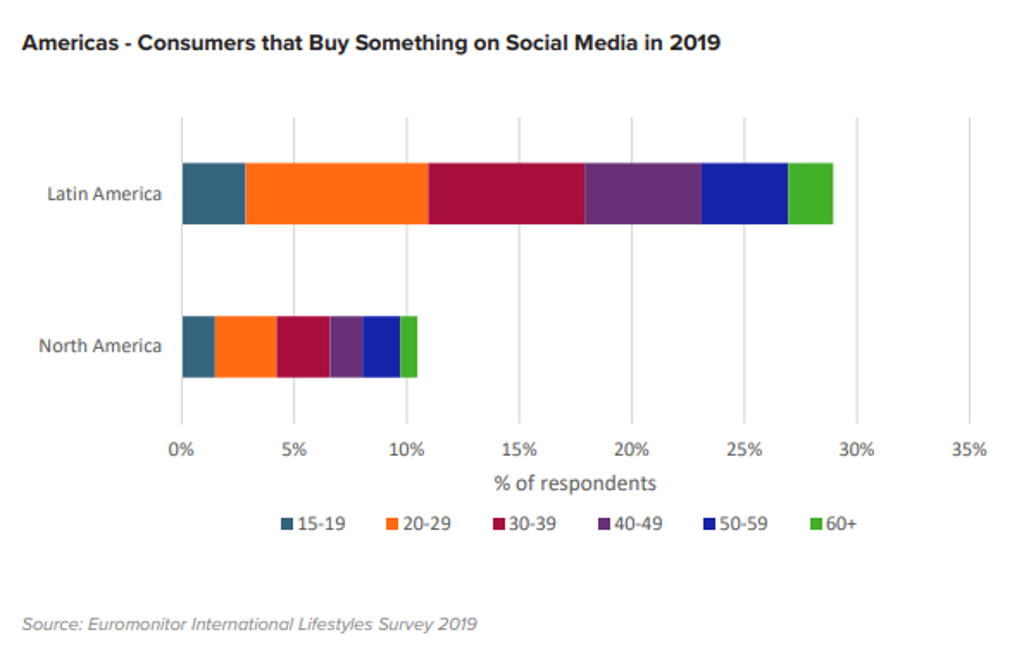The global travel industry continues to power on. However, there is a change in the air as climate activism is leading to greater awareness of climate change and the need for sustainable development.
New business models and digital tools are emerging to encourage consumers to choose more sustainable alternatives.
Furthermore, the tide is turning on inclusion where travel brands and destinations are slowly waking up to the need to be accessible for all visitors, regardless of age and ability, leveraging new technology to deliver truly personalised experiences.
Living in the real world
Social media has become seamlessly integrated into daily life across the world, with Facebook globally hitting over 2.4 billion users in 2019 and more than half of the population residing in the U.S. contributing to that number.
Despite the boundaries increasingly blurring between the online and offline worlds, especially for younger generations, there is still a strong preference by U.S. consumers to experience things in the real world, with 74% of consumers saying it was a priority for them in 2019, with Baby Boomers being the most experiential and Gen Z being less so by 15%.
Naturally, technology is a major enabler for U.S. consumers and 65% stated that they use technology to improve their day to day lives, which is fundamental to each stage of the customer journey. U.S. consumers also rate the value of engaging with different cultures, further driving interest in travel and tourism.
Social moves offline: Importance of influence and Shortening the booking window
Consumers are heavily influenced by social media when planning their trips in the pre-trip stage. Gen Z in particular are now starting to earn money and travel and seek inspiration from Instagram and YouTube.
Leveraging influencers is an opportunity for highly targeted communication with travellers as they create discrete communities based on common interests.
However, social media is also increasingly overshadowed by challenges such as data privacy and the importance of digital wellbeing. There has also been a push back on sharing experiences on social media, which has led to overcrowding and even the destruction of Instagram friendly locations.
While social media in travel still largely serves as a source of inspiration and discovery, other industries show the potential of these channels for direct purchases. In Latin America, for instance, almost one-third of consumers have purchased something via social media in 2019.
Social commerce is beginning to emerge for the travel industry, albeit slower off the mark than other sectors like internet retailing as the boundaries between communication, purchase and experience are increasingly blurring.
This drive towards an omnichannel presence is directing influencers from social media into the tour operator space, leveraging their communities to launch tours that are curated and more personalised.
Instagram launched s-commerce functionality in 2018 and has continued to roll out tools such as in-app checkout, all helping to shorten the booking window and enable more instant purchases directly with the consumer.
Booking travel on Instagram is slowly emerging, with the launch of easyJet’s Look & Book functionality through its mobile app, or the Instagram-only app called Six Travel, where you can book hotels directly on Instagram from influencers’ stories or via a link in their bio.
Subscription models
With leisure travel by nature being low frequency, it is difficult for travel brands to maintain a high level of engagement with customers as relations are often limited to rewards programmes.
While other industries have managed to build long term relationships through subscription models, this type of business model is only slowly beginning to be explored in travel. New subscription models for hotels and flights are being tested by those eager to succeed where many have failed before.
Following the Netflix-model, we see similar subscription services successfully being replicated across consumer industries from apparel and footwear, beauty products and books to meal kits and flowers.
Consumers, especially Millennials and Gen Z, see subscription services as a tool to reduce time and effort spent shopping, tapping into the access over ownership trend. Globally, 50% of users rated subscription services for their convenience and choice with 33.6% using them to enjoy a variety of new products and services.
For additional insights download our white paper Megatrends Shaping the Future of Travel: 2019 Edition.

